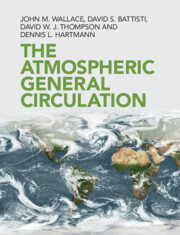Refine search
Actions for selected content:
8126 results in Fluid dynamics and solid mechanics
Index
-
- Book:
- Mechanics of Fluids
- Published online:
- 14 July 2023
- Print publication:
- 29 June 2023, pp 685-702
-
- Chapter
- Export citation
10 - One-Dimensional Viscous Flow
- from Part II - Solutions in Various Flow Regimes
-
- Book:
- Mechanics of Fluids
- Published online:
- 14 July 2023
- Print publication:
- 29 June 2023, pp 461-519
-
- Chapter
- Export citation
13 - Nonlinear Dynamics for Fluid Flow
- from Part II - Solutions in Various Flow Regimes
-
- Book:
- Mechanics of Fluids
- Published online:
- 14 July 2023
- Print publication:
- 29 June 2023, pp 613-641
-
- Chapter
- Export citation
3 - Kinematics
- from Part I - Continuum Equations of Fluid Mechanics
-
- Book:
- Mechanics of Fluids
- Published online:
- 14 July 2023
- Print publication:
- 29 June 2023, pp 84-147
-
- Chapter
- Export citation
Reviews
-
- Book:
- Mechanics of Fluids
- Published online:
- 14 July 2023
- Print publication:
- 29 June 2023, pp ii-ii
-
- Chapter
- Export citation
5 - Constitutive Equations
- from Part I - Continuum Equations of Fluid Mechanics
-
- Book:
- Mechanics of Fluids
- Published online:
- 14 July 2023
- Print publication:
- 29 June 2023, pp 194-228
-
- Chapter
- Export citation
14 - Turbulent Flow
- from Part II - Solutions in Various Flow Regimes
-
- Book:
- Mechanics of Fluids
- Published online:
- 14 July 2023
- Print publication:
- 29 June 2023, pp 642-671
-
- Chapter
- Export citation
11 - Multi-Dimensional Viscous Flow
- from Part II - Solutions in Various Flow Regimes
-
- Book:
- Mechanics of Fluids
- Published online:
- 14 July 2023
- Print publication:
- 29 June 2023, pp 520-579
-
- Chapter
- Export citation
Part I - Continuum Equations of Fluid Mechanics
-
- Book:
- Mechanics of Fluids
- Published online:
- 14 July 2023
- Print publication:
- 29 June 2023, pp 1-262
-
- Chapter
- Export citation
ON THE SAFE STORAGE OF BAGASSE
- Part of
-
- Journal:
- The ANZIAM Journal / Volume 65 / Issue 1-2 / January 2023
- Published online by Cambridge University Press:
- 23 June 2023, pp. 79-92
-
- Article
- Export citation
COUETTE FLOW OVER A HEAT ISLAND
- Part of
-
- Journal:
- The ANZIAM Journal / Volume 65 / Issue 1-2 / January 2023
- Published online by Cambridge University Press:
- 05 June 2023, pp. 3-28
-
- Article
-
- You have access
- Open access
- HTML
- Export citation

The Atmospheric General Circulation
-
- Published online:
- 26 May 2023
- Print publication:
- 20 April 2023
-
- Textbook
- Export citation
1 - Atmospheric Observations and Models
- from Part I - Background
-
- Book:
- The Atmospheric General Circulation
- Published online:
- 26 May 2023
- Print publication:
- 20 April 2023, pp 3-32
-
- Chapter
- Export citation
3 - The Angular Momentum Balance
- from Part II - Balance Requirements for the General Circulation
-
- Book:
- The Atmospheric General Circulation
- Published online:
- 26 May 2023
- Print publication:
- 20 April 2023, pp 57-71
-
- Chapter
- Export citation
7 - Dynamics of the Zonal Mean Flow
- from Part III - Dynamics of the Zonal Mean Flow
-
- Book:
- The Atmospheric General Circulation
- Published online:
- 26 May 2023
- Print publication:
- 20 April 2023, pp 121-132
-
- Chapter
- Export citation
11 - The Northern Hemisphere Winter Zonally Varying Climatology
- from Part V - The Zonally Varying Extratropical Tropospheric Circulation
-
-
- Book:
- The Atmospheric General Circulation
- Published online:
- 26 May 2023
- Print publication:
- 20 April 2023, pp 193-213
-
- Chapter
- Export citation
14 - The Annual Mean Circulation of the Tropics
- from Part VI - The Tropical General Circulation
-
-
- Book:
- The Atmospheric General Circulation
- Published online:
- 26 May 2023
- Print publication:
- 20 April 2023, pp 259-271
-
- Chapter
- Export citation
Acknowledgments
-
- Book:
- The Atmospheric General Circulation
- Published online:
- 26 May 2023
- Print publication:
- 20 April 2023, pp xvi-xvi
-
- Chapter
- Export citation
17 - El Niño–Southern Oscillation
- from Part VI - The Tropical General Circulation
-
-
- Book:
- The Atmospheric General Circulation
- Published online:
- 26 May 2023
- Print publication:
- 20 April 2023, pp 294-310
-
- Chapter
- Export citation
10 - Wave–Mean Flow Interaction in the Tropical Stratosphere
- from Part IV - The Stratospheric General Circulation
-
-
- Book:
- The Atmospheric General Circulation
- Published online:
- 26 May 2023
- Print publication:
- 20 April 2023, pp 172-190
-
- Chapter
- Export citation




